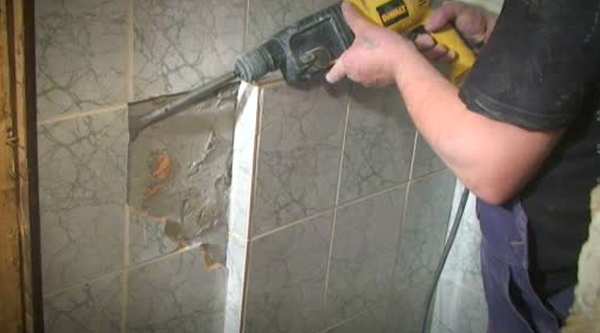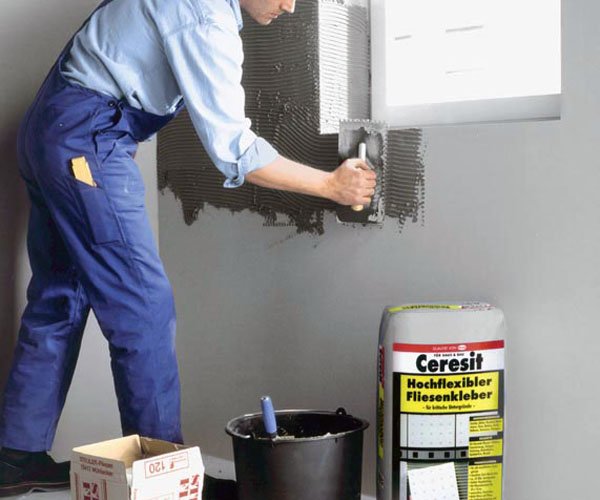How to start a bathroom renovation - a description of all the stages
Those who believe that it is enough just to “clean up and touch up” in some places, this article will not be interesting. It was written for a prudent, economic person who is used to doing everything thoroughly, so that later he can forget about this problem for several years. We will analyze in detail the entire preparation process from scratch, and the reader himself will determine where to start repairing the bathroom and toilet in a new building and what he needs to consider.
Perhaps the bathroom is the only room in the apartment in which the repair is associated with certain difficulties.
Firstly, this room is used daily, so it is desirable to complete all the work as soon as possible.
Secondly, it is characterized by high humidity, therefore, purely "cosmetic" measures are clearly indispensable here.
Thirdly, it has a large number of plumbing fixtures (especially in old houses where the toilet and bathroom are combined), which also require attention, and sometimes replacement.
So where to start? By the way, the repair is carried out not only in the building already in operation. Even in a newly built house, there are various “deficiencies” that the owners have to fix on their own. And, unfortunately, this is not uncommon.
A superficial approach to this issue subsequently turns into a bunch of problems and a “headache” - it has been tested repeatedly, and by many.
What needs to be determined?
"Scope of repair" and your capabilities - you need to clearly understand what is supposed to be done and answer the following questions.
- How much repairs will be carried out based on how much money is planned to be spent. One of the main points - will the bathtub change? If so, which model, what dimensions, how will it be installed? After all, changing this plumbing fixture often leads to redevelopment of the entire room. Speaking of installation and baths, you can read here.
- Who will do all the work - only the owners, on their own, or will they have to invite specialists?
- What tools, accessories and materials will be needed?
The full list of works can be specified in the following order:
- dismantling of old equipment and finishing (cladding);
- surface cleaning;
- "protective" measures;
- replacement of pipes, installation of plumbing, metering devices (if the time is right), cleaning filters (if they are not);
- surface finishing.
The sequence of these events must be approached creatively. Sometimes it is easier to clad the wall, and then install, for example, a mixer. But it happens that when working with plumbing, there is a risk of damaging the finish.
Room dimensions
Picking up everything you need “by eye” is not only a waste of financial costs. If suddenly something is not enough (and this happens quite often), you will have to stop all work and go shopping again, instead of doing repairs. And it’s not yet a fact that exactly what you need will be available.
But just measuring everything with a tape measure is not enough. It is advisable to draw up a drawing (plan) of the bathroom and indicate all dimensions on it. This will help to more accurately determine the required amount of materials. By the way, having familiarized yourself with such a scheme, any seller will be able to tell you how much is needed, for example, pipes, tiles, and so on, so that there is no big overrun.
In addition, do not forget about all kinds of extensions, fittings and the like, which may be needed when finishing surfaces (or laying pipes) in difficult areas - corners, niches, ledges. An inexperienced person may not take all this into account, but a specialist, looking at the plan, will immediately tell you. Calculate the cost of laying tiles.
Selection of materials
Not everything that you like can be used in the bathroom. It is necessary to take into account such points:
- Is the material resistant to moisture?
- will it be possible to work with him on his own? What tools do you need and do you have them at home? You may need to purchase something in advance.
Separately, it is worth dwelling on some more points.
First. Given the specifics of the premises, it is imperative to purchase compounds such as soil, antiseptic, waterproofing materials, putty. Why - it will become clear a little later.
Second. Most of all, any hostess is worried about the condition of the ceiling. Constant dampness very quickly leads to the appearance of mold and fungus.
Beginning of work
Dismantling of old equipment and coating
As for engineering communications and instruments, this is done as needed. But if they remain, then you need to clean everything (metal) well to reveal signs of corrosion and so on. In any case, previously painted parts must be prepared for subsequent processing.
Surface preparation
Reducing everything only to cleaning whitewash, paint and eliminating irregularities is short-sighted. Therefore, we will consider all the stages of such work. It makes no sense to explain that you need to start it from the top.
cleaning
And not only from the old coating. Walls, ceiling, floor need to be washed well, to the very foundation. This is the only way to see all the defects that were hidden under the finishing materials. Naturally, shells, cracks, cracks are immediately sealed.

"Protective" measures
Impregnation. For this, antiseptic compounds are used that protect materials from decay, excluding the development of fungus and mold. If material possibilities allow, then it is advisable to make a penetrating (impregnating) type.
Waterproofing. Depending on the type of further finishing, you can also use roll materials, membranes, with which all surfaces of the bathroom are finished. This is especially important for the floor and ceiling, as well as their junction with the walls.
Foundation preparation
Puttying. If painting is to be done, then this composition will achieve absolute smoothness of the surface. It can also be used to level the plane if the difference in height is not too significant.

Padding
This is often neglected, not understanding what such processing gives. The benefit is "complex" - strengthening the upper layer of the material, increasing the reliability of "setting" with the surface of various compositions (glue, paint and varnish).
If the work is carried out by invited specialists, then it is better to purchase the necessary materials on your own. They only need to find out what should be purchased, what “parameters” to pay attention to? Practice shows that repairs from the Contractor's material are always more expensive.
It is advisable to make all purchases with a small margin. If you suddenly need to make a “spot” repair, eliminate “local” damage, then the necessary material will always be at hand.
Do not rely on the material consumption indicated by the Manufacturer. For example, paints, primers per 1 m2. To meet this "standard", you need to be highly qualified. Practice shows that the real consumption will be 10 - 15% more.
When replacing pipes on a riser, you need to discuss in advance with your neighbors the time to turn off the water supply, and based on this, call a locksmith.






